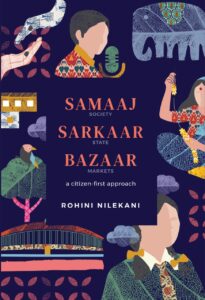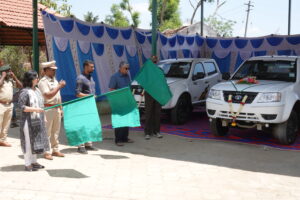Bengaluru, India, Oct 10, 2025 – Manotsava, the National Mental Health Festival, returns on 8–9 November 2025 at The Lalit Ashok, Bengaluru. Co-hosted by Rohini Nilekani Philanthropies (RNP), National Institute of Mental Health and Neuro Sciences (NIMHANS), and National Centre for Biological Sciences (NCBS), the festival will bring together leading voices from mental health, science, policy, art, technology, and lived experience, alongside thousands of participants from across the country. Over two days, Manotsava 2025 will create space for dialogue that connects the personal to the societal, the cultural to the scientific, and the clinical to the everyday.
On 10th and 11 th November, NCBS will host an invite-only neuroscience research symposium, themed ‘Emerging biology of neuropsychiatric disorders’. It aims to deepen dialogues around brain research by uniting leading neuroscientists from around the world.
The public programme at Lalit Ashok will feature 50+ sessions exploring a wide range of themes, including childhood and behaviour, teen mental health, caregiving, marriage and harmony, workplace burnout, psychedelic as therapeutics, and much more. Conversations will also highlight the mind–body connection through discussions on disability, ageing, and the
gut–brain axis.
Keynote speakers across the 2 days are Dr Richard J Davidson -William James and Vilas Professor of Psychology and Psychiatry at the University of Wisconsin–Madison and the Founder and Director of the Center for Healthy Minds, Rohini Nilekani – Chairperson, Rohini Nilekani Philanthropies, Kiran Mazumdar-Shaw – executive chairperson and founder of Biocon Limited and Nikhil Kamath – Investor & Entrepreneur and Co-founder of Zerodha.
Manotsava will also debut “Belong-a-luru” – a music-led, multi-disciplinary culture project – by folk-rock band Swarathma that explores what it means to belong in the cities we live in. This theme is deeply connected to Manotsava’s mission of encouraging dialogues on mental health amid rising isolation and alienation.
Speakers at this year’s festival include Dr Nandita Iyer, Dr Prabha Chandra (NIMHANS), Prof Vidita Vaidya (TIFR Mumbai), Neha Bhat(@indiansextherapist), Kaz De Jong (Medecin Sans Frontieres), Bakul Dua (Mommy Mix Tapes), Rahul Roy (filmmaker), Dr. Amit Malik (Amaha), Prof. Surya Dolla (IIT Bombay), Aparna Piramal Raje, and many others.
The festival is open to all, welcoming students, professionals, caregivers, and health practitioners. New to Manotsava 2025 will be a dedicated children’s zone and special programming on early childhood through interactive formats. The first edition of Manotsava, held in October 2024, welcomed 2,300+ participants across 70 expert-led sessions. Its success highlighted the need for a festival that enables the public to engage directly with experts on mental health while finding a vibrant and inclusive space to
deepen their understanding.
The second edition builds on this momentum, reaffirming the festival’s mission to make mental health discussions accessible, celebratory, and community-driven. With interactive events, panel discussions, and artistic performances, Manotsava 2025 aspires to spark new ways of thinking about mental health, where curiosity, compassion, and community come together to shape a healthier future.
To know more: www.nationalmentalhealthfestival.com
Date: 8–9 November 2025
Location: The Lalit Ashok, Bengaluru.
Entry: Open & free for all



